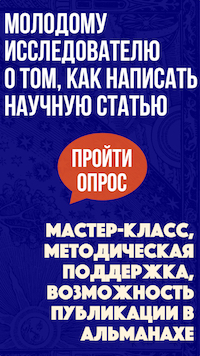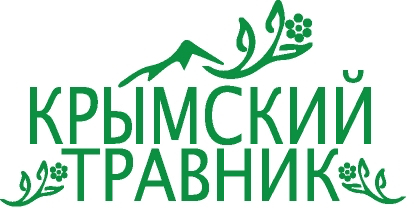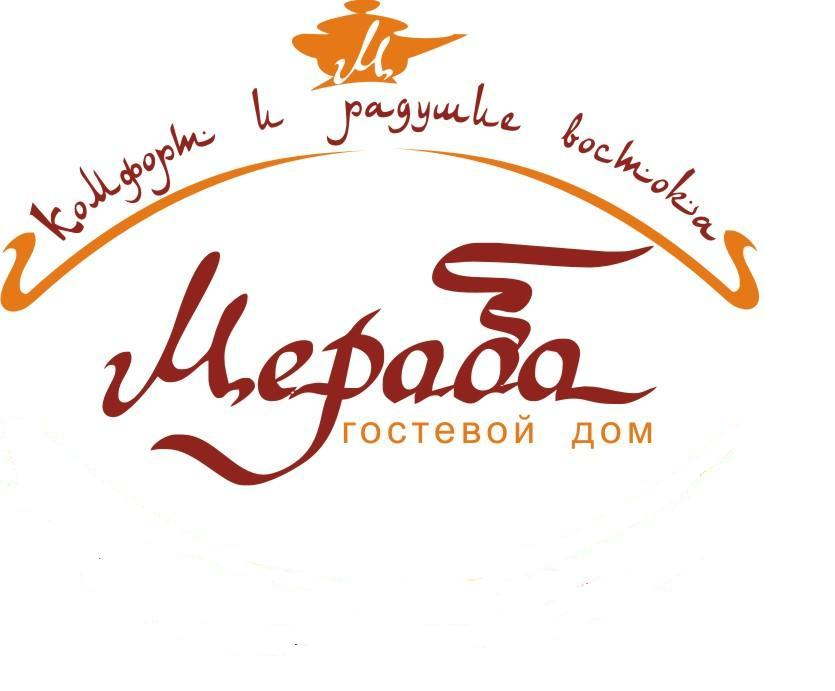МОЛОДЁЖНЫЙ ПРОЕКТ ДЛЯ ТЕХ, КТО ДЕЛАЕТ ПЕРВЫЕ ШАГИ В НАУКЕ
/components/bitrix/system.auth.form/auth_alm/images/login.gif) Войти
Войти /components/bitrix/system.auth.form/auth_alm/images/register.gif) Регистрация
Регистрация
Войти в корпоративную почту как автор/член редколлегии/рецензент журнала
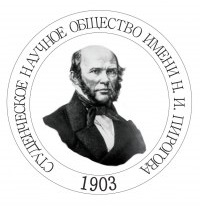


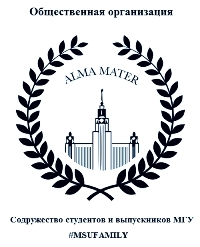
2016. Том 11. Выпуск 1. Система планета Земля / 'The Earth Planet System / System Planet Erde
ПОЧВЫ И ГРУНТЫ / SOILS AND GROUNDS / BÖDEN
Присяжная А.А., Чернова О.В., Снакин В.В.
Развитие системы особо охраняемых природных территорий (ООПТ) — основа сохранения биологического разнообразия природных комплексов
Присяжная Алла Александровна, кандидат биологических наук, старший научный сотрудник Института фундаментальных проблем биологии РАН ORCID 0000-0002-5564-8811
ORCID 0000-0002-5564-8811
E-mail: alla-a-prisyazhnaya@j-spacetime.com; alla_pris@rambler.ru
Чернова Ольга Владимировна, кандидат биологических наук, старший научный сотрудник Института проблем экологии и эволюции им. А.Н.Северцова РАН, ученый секретарь Научного совета по почвоведению РАН ORCID 0000-0001-5236-3872
ORCID 0000-0001-5236-3872
E-mail: olga-v-chernova@j-spacetime.com; ovcher@mail.ru
Снакин Валерий Викторович, доктор биологических наук, профессор, руководитель сектора Музея землеведения Московского государственного университета имени М.В.Ломоносова, заведующий лабораторией Института фундаментальных проблем биологии РАН ORCID 0000-0002-4073-3933
ORCID 0000-0002-4073-3933
E-mail: valery-v-snakin@j-spacetime.com; snakin@mail.ru
В статье обсуждается роль почв в поддержании общебиосферного баланса и сохранении биологического и ландшафтного разнообразия. Рассмотрена репрезентативность системы ООПТ России с позиции представленности разнообразия почв и ландшафтов. Проведённый анализ показал несоответствие распространённости различных групп почв на территории страны и занимаемой ими площади в пределах охраняемых территорий и, соответственно, необходимость коррекции существующей системы заповедников и национальных парков.
Ключевые слова: биоразнообразие, почвенное разнообразие, почвенное картографирование, ООПТ, заповедник, национальный парк.
Цитирование по ГОСТ Р 7.0.11—2011:
Присяжная, А. А., Чернова, О. В., Снакин, В. В. Развитие системы особо охраняемых природных территорий (ООПТ) — основа сохранения биологического разнообразия природных комплексов [Электронный ресурс] / А.А. Присяжная, О.В.Чернова, В.В. Снакин // Электронное научное издание Альманах Пространство и Время. — 2016. — Т. 11. — Вып. 1: Система планета Земля. — Стационарный сетевой адрес: 2227-9490e-aprovr_e-ast11-1.2016.41.
Prisyazhnaya A.A., Chernova O.V., Snakin V.V.
Development of Nature Reserved Areas Network: The Basis of Conservation of Biological Diversity of Natural Systems
Alla A. Prisyazhnaya, Sc.D. (Biology), Senior Researcher at Institute of Basic Biological Problems, Russian Academy of Sciences  ORCID 0000-0002-5564-8811
ORCID 0000-0002-5564-8811
E-mail: alla-a-prisyazhnaya@j-spacetime.com; alla_pris@rambler.ru
Olga V. Chernova, Sc.D. (Biology), Senior Researcher at A.N. Severtsov Institute of Problems of Ecology, Russian Academy of Sciences, Scientific Secretary at RAS Council for Soil Studies ORCID 0000-0001-5236-3872
ORCID 0000-0001-5236-3872
E-mail: olga-v-chernova@j-spacetime.com; ovcher@mail.ru
Valery V. Snakin, D.Sc. (Biology), Professor, Head of Sector at Museum of Geoscience in Lomonosov Moscow State University (MSU), Head of Laboratory at Institute of Basic Biological Problems, Russian Academy of Sciences (IBBP RAS) ORCID 0000-0002-4073-3933
ORCID 0000-0002-4073-3933
E-mail: valery-v-snakin@j-spacetime.com; snakin@mail.ru
The problem of conservation of dwindling biodiversity on our planet is inextricably linked to the protection of endangered animal and plant species in areas of their natural habitat. Hereat, maintaining the historically formed cycles of matter and energy in these areas is possible only when adequate space of virgin (or minimally affected by human activity) is allocated ecosystems. It is obvious that the bio-resources management, evaluation and prediction of changes in these areas is not possible without the regime of long-term studies of regulatory processes in ecosystems. Such studies need to be timed to prototype objects selected within the protected areas. Russia, with its vast territory, as a member-state of the UN Convention ‘On Biological Diversity’ bears primary responsibility for the conservation of biodiversity in Northern Eurasia at the highest (ecosystem) level. Implementation of this mission depends, first of all on representativeness of Russia’s network of specially protected natural territories.
In our article, we represent analysis of the role of soil in maintaining biosphere balance and the conservation of biological diversity and provide information about soils and of nature reserves and national parks in Russia. Based on the cartographic information (Soils’ Map of Russia 1:2.500.000 scale), we estimated representation of nature reserved areas in Russia for conservation of natural soil diversity. We calculated different soils presentation in nature reserves and national parks by means of ArcView GIS system considering the number and areas of soil types and complexes. Our analysis has shown that 37% of soils and 67% of complexes from Soils’ Map legend are not represented in nature reserves and national parks. We also found that reserve areas are irrationally allocated; there is notable discrepancy between the area of different soil groups in the country and within the protected territories.
Therefore, the correction of a modern system of reserves and national parks is necessary. First of all, it is necessary to expand a network of steppe reserves and of taiga reserves (in Siberia outside areas of mountain zonal sequence). We conclude the organization of new cluster reserves is a real way for conservation of a biodiversity in the conditions of high anthropogenic impact. Such measures will allow to distribute nature reserves more evenly on the territory of the country and to capture the main soil differences, having provided thereby more reliable conservation both landscape and biodiversity.
Keywords: biological diversity, soil diversity, soil mapping, nature reserved areas, nature reserve, national park.
Cite MLA 7:
Prisyazhnaya, A. A., O. V. Chernova, and V. V. Snakin. "Development of Nature Reserved Areas Network: The Basis of Conservation of Biological Diversity of Natural Systems." Electronic Scientific Edition Almanac Space and Time 11.1(‘The Earth Planet System’) (2016). Web. <2227-9490e-aprovr_e-ast11-1.2016.41>. (In Russian).
Список литературы / References
Литература Конвенция о биологическом разнообразии. Принята в Рио-де-Жанейро 5 июня 1992 года [Электронный ресурс] // Официальный сайт ООН. Режим доступа: http://www.un.org/ru/documents/decl_conv/conventions/biodiv.shtml. Ботаника. 29 декабря, вечер. Соединенное заседание секции совместно с подсекцией почвоведения // Дневник XII Съезда русских естествоиспытателей и врачей в Москве с 28 декабря 1909 г. по 6 января 1910 г. № 4. 1909. М., 1910. С. 145—151. Викторов С.В., Ремезова Г.Л. Индикационная геоботаника. М.: Изд-во МГУ, 1988. 168 с. Гиляров М.С. Зоологический метод диагностики почв. М.: Наука, 1965. 269 с. Дурбанский аккорд: Материалы Пятого всемирного конгресса по охраняемым территориям / Пер. с англ. под ред. Ю.Л. Мазурова. М.: Ин-т Наследия, 2004. 272 с. Забоева И.В., Дёгтева С.В., Жангуров Е.В., Лаптева Е.М., Втюрин Г.М., Дымов А.А. Печоро-Илычский государственный природный биосферный заповедник // Почвы заповедников и национальных парков Российской Федерации / Гл. ред. Г.В. Добровольский. М.: НИА-Природа — Фонд «Инфосфера», 2012. С. 40—45. Исаченко А.Г. Ландшафтная карта России. Масштаб 1:10000000. Объяснительная записка // Геологический атлас России. М. — СПб.: Геокарт, 1996. Раздел 4. Касаткина Г.А., Растворова О.Г., Счастная Л.С., Федорова Н.Н., Русаков А.В. Государственный природный биосферный заповедник «Белогорье». // Почвы заповедников и национальных парков Российской Федерации. / Гл. ред. Г.В. Добровольский. М.: НИА-Природа – Фонд «Инфосфера», 2012. С. 94—99. Классификация и диагностика почв России / Авторы и составители: Л.Л. Шишов, В.Д. Тонконогов, И.И. Лебедева, М.И. Герасимова. Смоленск: Ойкумена, 2004. 342 с. Климентьев А.И., Павлейчик Е.В. Государственный природный заповедник «Оренбургский». // Почвы заповедников и национальных парков Российской Федерации. / Гл. ред. Г.В. Добровольский. М.: НИА-Природа – Фонд «Инфосфера», 2012. С. 221—225. Криволуцкий Д.А. Почвенная фауна в экологическом мониторинге. М.: Наука, 1994. 269 с. Мельченко В.Е., Хрисанов В.Р., Митенко Г.В., Юрин В.О., Снакин В.В. Ландшафтный анализ системы ООПТ России // Использование и охрана природных ресурсов в России. 2004. № 6. С. 101—104. Национальный атлас почв Российской Федерации / Гл. ред. С.А. Шоба, отв. ред. И.О. Алябина, И.С. Урусевская, О.В. Чернова. М.: Астрель: АСТ, 2011. 632 с. Почвенная карта РСФСР. Масштаб 1:2 500 000 / Гл. ред. В.М. Фридланд. М.: ГУГК, 1988. Почвенный покров и земельные ресурсы Российской Федерации / Под ред. Л.Л. Шишова, Н.В. Комова, А.З. Родина, В.М. Фридланда. М: Почвенный ин-т им. В.В. Докучаева РАСХН, 2001. 400 с. Почвы заповедников и национальных парков Российской Федерации / Гл. ред. Г.В. Добровольский, отв. ред. О.В.Чернова, В.В. Снакин, Е.В. Достовалова, А.А. Присяжная. М.: НИА-Природа – Фонд «Инфосфера», 2012. 478с. Роль почвы в формировании и сохранении биоразнообразия / Отв. ред. Г.В. Добровольский, И.Ю. Чернов. М.: Товарищество научных изданий КМК, 2011. 274 с. Снакин В.В., Веремеева А.А., Хрисанов В.Р. Ландшафтный анализ перспективной системы ООПТ России // Использование и охрана природных ресурсов в России. 2006. № 6. С. 108—115. Тишков А.А. Охраняемые природные территории и формирование каркаса устойчивости // Оценка качества окружающей среды и экологическое картографирование. М.: Институт географии РАН, 1995. С. 94—104. World Reference Base for Soil Resources 2006. Rome (Italy): FAO, 2006. 133 p.
References:
"Botany. December 29, Evening. United Session of the Section, Together with Subsection for Soil Science." Diary of 12th Congress of Russian Naturalists and Physicians in Moscow from 28 Dec. 1909 to 6 Jan. 1910. Moscow, 1910, no. 4 (1909), pp. 145—151. (In Russian).
Dobrovolsky G.V., ed. Soils of Nature Reserves and National Parks of the Russian Federation. Moscow: ‘Infosphere’ Foundation Publisher, NIAPriroda Publisher, 2012. 478 p. (In Russian).
Dobrovolsky G.V., Chernov I.Yu., eds. Soil Role in Formation and Conservation of a Biodiversity. Moscow: Tovarishchestvo nauchnykh izdaniy KMK Publisher, 2011. 274 p. (In Russian).
Durban Chord: Materials of the 5-th World Congress on the Protected Territories. Moscow: Institute of Heritage Publisher, 2004. 272 p. (In Russian).
Fridland V.M. ed. Soils’ Map of RSFSR. 1:2.500.000 Scale. Moscow: USSR Main Department of Geodesy and Cartography Publisher, 1988. (In Russian).
Gilyarov M.S. Zoological method of diagnostics of soils. Moscow: Nauka Publisher, 1965. 269 p. (In Russian).
Isachenko A.G. "Landscape Map of Russia. 1:10.000.000 Scale. Explanatory Note." Geological Atlas of Russia. Moscow and St. Petersburg: Geokart Publisher, 1996, section 4. (In Russian).
Kasatkina G.A., Rastvorova O.G., Schastnaya L.S., Fedorova N.N., Rusakov A.V. "National Nature Biospheric Reserve “Belogorie”." Soils of Nature Reserves and National Parks of the Russian Federation. Moscow: ‘Infosphere’ Foundation Publisher, NIAPriroda Publisher, 2012, pp. 94—99. (In Russian).
Klimentiev A.I. "National Nature Biospheric Reserve “Orenburgskiy”." Soils of Nature Reserves and National Parks of the Russian Federation. Moscow: ‘Infosphere’ Foundation Publisher, NIAPriroda Publisher, 2012, pp. 221—225. (In Russian).
Krivolutskiy D.A. Soil Fauna in Environmental Monitoring. Moscow: Nauka Publisher, 1994. 269 p. (In Russian).
Melchenko V.E., Khrisanov V.R., Mitenko G.V., Yurin V.O., Snakin V.V. "Landscape Analysis of System of Nature Reserved in Russia." Use and Protection of Natural Resources in Russia 6 (2004): 101—104. (In Russian).
National Atlas of Soils of the Russian Federation. Moscow: Astrel Publisher, AST Publisher, 2011. 632 p. (In Russian).
Shishov L.L., Tonkonogov V.D., Lebedeva I.I., Gerasimova M.I. ed. Classification and Diagnostics of Soils of Russia. Smolensk: Oykumena Publisher, 2004. 342 p. (In Russian).
Shishova L.L., Komova N.V., Rodina A.Z., Fridlanda V.M. eds. Soil Cover and Land Resources of the Russian Federation. Moscow: V.V. Dokuchaev Soil Institute of Russian Academy of Agricultural Science Publisher, 2001. 400 p. (In Russian).
Snakin V.V. "Dynamics of Biodiversity, Drift of Continents and Globalization." Age of Globalization 1 (2015): 66—74. (In Russian).
Snakin V.V., Veremeeva A.A., Khrisanov V.R. "Landscape Analysis of Perspective System of Nature Reserved of Russia." Use and Protection of Natural Resources in Russia 6 (2006): 108—115. (In Russian).
"The Convention on Biological Diversity, adopted in Rio de Janeiro on 5 June 1992." Official Website of UN. UN, n.d. Web. <http://www.un.org/ru/documents/decl_conv/conventions/biodiv.shtml>. (In Russian).
Tishkov A.A. "The Protected Natural Territories and Formation of Framework of Stability." Assessment of Environment Quality and Ecological Mapping. Moscow: RAS Institute of Geography Publisher, 1995, pp. 94—104. (In Russian).
Viktorov S.V., Remezova G.L. Indication Geobotany. Moscow: Moscow State University Publisher, 1988. 168 p. (In Russian).
World Reference Base for Soil Resources 2006. Rome: FAO, 2006. 133 p.
Zaboeva I.V., Degteva S.V., Zhangurov E.V., Lapteva E.M., Vtyurin G.M., Dymov A.A. "Pechora-Ilych National Nature Biospheric Reserve." Soils of Nature Reserves and National Parks of the Russian Federation. Moscow: ‘Infosphere’ Foundation Publisher, NIAPriroda Publisher, 2012, pp. 40—45. (In Russian).
Читать статью / Read more




